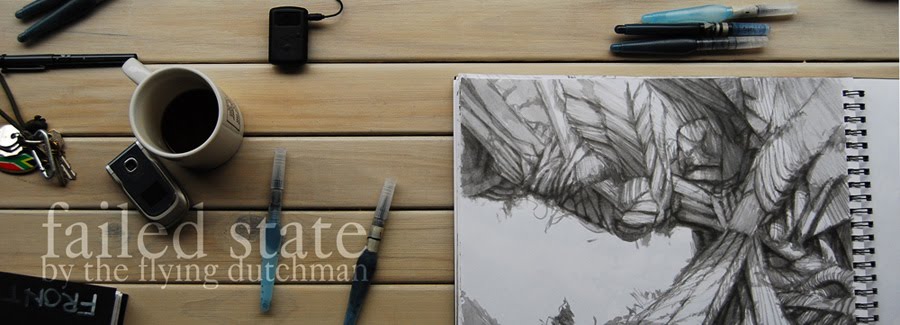Hey all. I was asked for advice regarding stenciling by a mate and upon typing this up i figured this knowledge may be of help to others, so here goes, a little crash course in kicking Banksy's arse. Please do.
I'll give you what i know about stenciling,but the key is basically a lot of problem solving and fine cutting, which is going to drive you nuts, but if it works, then it's worth it.
Firstly, the material which works well for this kind of thing is acetate, you get big sheets at craft stores in rolls, like really thick transparencies. It's tough, so won't fall apart or sag like cardboard, but it's harder to cut. Also, even thought it's tough, keep it safe in a file with the rest of your stencils, because they will get damaged if they're lying around loose.
Second is the big problem solving issue which is going to require quite a bit of thought and planning. That is the fact that the picture you are trying to make work must be down to two solid colours, black and white, one which is cut out and one which is masked by the remaining parts of stencil. Now the tricky bit is cutting the relevant areas out whilst still keeping the remainder of the shapes intact and together. This can either be done through choosing which areas can be compomised and leave them out, or 'floating' bits can be kept in place with strips, although for the overall effect this should be avoided. I'd say it is better to do your planning well and thus not have to deal with the problem of 'floating' areas.
How to create an image that is heavily monochrome(meaning no grey) is simple enough of you have photoshop and a printer Convert your image to grayscale and select 'levels' (Ctrl+L). Then force the colour marks to the centre, this will get rid of the greys, basically mess about 'til you get the best balance of black and white, keeping an eye on the amount of fine detail that you're going to have to cut out later. Then you just print it out and tape it to the underside of the sheet of acetate and get cutting!
This is the extent of my practical knowledge, it's basically how you use it that varies and will determine the result. The stenciling i've done has been largely on t-shirts where i've done a crude stencil and worked the relevant fine detail in later when all the big elements were in place. Naturally if you're doing hit'n'run spraypainting in public space, then the idea of adding in detail afterwards is not really applicable!
Like i said, lots of problem solving. Also, keep and eye on your stencils in case they get clogged with paint after use, otherwise the image they produce will get less and less sharp.
Hope this helps, let me know, yeah?
Take care.
H

No comments:
Post a Comment